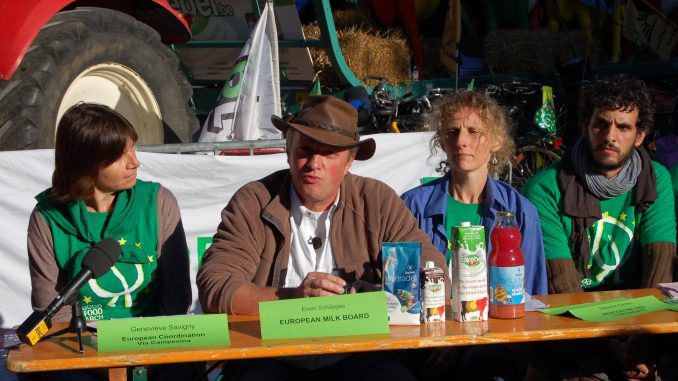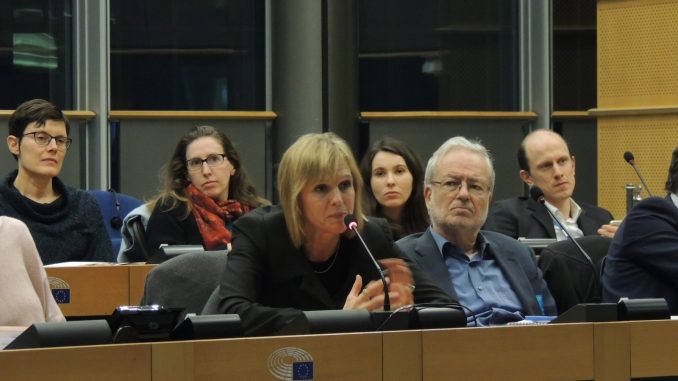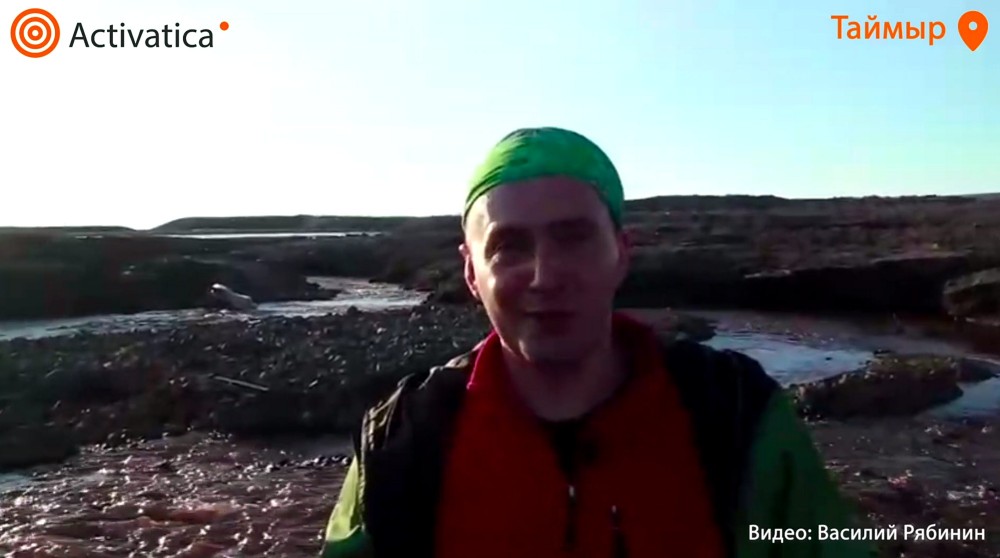Ed. note: This article first appeared on ARC2020.eu. ARC2020 is a platform for agri-food and rural actors working towards better food, farming, and rural policies for Europe.
The war in Ukraine has changed Europe. But has it? Peace was never a given, but esteemed to be our standing achievement, just like the often cited European values, democracy, the rule of law, and solidarity. They have been so attractive to many of our Eastern European neighbours that they have taken every risk and effort to become part of it. Have we honoured that courage and expectation in the West?
On June 7 ARC2020 and Forum Synergies launch a new book titled “Rural Europe Takes Action – No more business as usual”. Indeed there is no excuse for business as usual, given this collection of stories of innovation and resilience, from 25 countries, that dare to imagine a larger and a more open Europe. With our heads in the clouds of possibility, and our feet firmly on the ground, we draw from these inspiring tales of action a series of recommendations for policymakers. The coda to our symphony of stories from the ground is an ‘unwritten regulation’: an Integrated European Rural, Agricultural and Food Policy.
Here is a teaser for the book – its conclusion – a call to take political action now!
If we look for a moment only at rural Europe and the European policies in force there, the war seems not to have changed much. There was much concern about interrupted imports of fertilisers and animal feed from Ukraine to the EU, worries about the pig and poultry sector, about rising food prices and open world markets. But the EU’s agricultural, food and rural policy seems to be staying where it is, even though the war, like the pandemic and the climate crisis, has revealed its immense vulnerability and dependence.
True, not everything can change in a day. But there are moments like the beginning of a new programming period for the Common Agriculture and Cohesion Policy and the “Future of Europe” process that call for a step back and a fresh thought. Can we really continue to pay the bulk of CAP money to farmers based on hectares? Imagine Ukraine joining the EU in a few years as promised; should we pay oligarchs or Western European land grabbers for owning land?
Today subsidies to farmers can make up more than half of their income. The historical reason is to keep them ‘competitive’ on the world market. But this will make them even less so. What about investing the CAP budget into a new rural infrastructure allowing farmers, seed savers, bakers and all artisanal producers to establish a resilient food system in a circular economy, renewable energy and short supply chains? What about ceasing to see rural areas through the lens of primary production only, and considering them as the diverse and multifold spaces which they actually are or ought to be, home to industries, crafts and services, towns and villages, land devoted to production and leisure as well as nature protection?
Rural areas are wholesome spaces and only policies which take this wholesomeness into account will be supportive to rural areas where thriving societies live, work and evolve. We have gathered examples of how it works. The moment to start a new integrated rural policy is now.
What about investing much more into the self-organisation and empowerment of Europe’s strong civil society? The war has shown that, more than ever, civil society takes action on its own. When refugees began to flow into Poland and other neighbouring countries of Ukraine, civil organisation was much quicker and more efficient than governmental action. Empathy and solidarity were neither prescribed nor paid; they were simply there. Why not offer better structures and unbureaucratic support for bottom-up action groups and socio-ecological initiatives?
What about educating young people, many now Ukrainian refugees, on how they can make peace grow in a resilient and self-organised environment, respecting the rules set by limited natural resources and climate change? We cannot continue to consume energy, land and water outside the EU and hide the impact of our consumption patterns from the equation.
We can neither hide the appalling amount of food waste, nor the wasteful long-distance transport of food throughout Europe. Rural and farm policy must boost local or territorial circular economy and energy saving. That is part of the plan to make Europe less dependent. Europe will be a promoter of peace if it reduces its climate and biodiversity footprint and plays fair on global markets.
The reflexive reaction of the European Commission and EU member states to the war was particularly disappointing. Within days some political leaders – as if waiting for the opportunity – were ready to pass over ambitions to act on climate change and biodiversity loss, questioning their own Green Deal and Farm to Fork strategy, even calling for the ploughing of set-aside land to attain “food sovereignty”. Fortunately, there has been a fight back from civil society organisations and some EU institutions.

Civil Society and farmers’ organisations at the Good Food Good Farming demo in Brussels, 2012
Policy change at a snail’s pace
Since the European Conference in Cork in 1996, there has been a long sequence of policy statements and political declarations on rural policy from EU Institutions and civil society organisations (European Rural Parliament, ELARD, ARC 2020, and Rural Voices Report). They all fundamentally point in the same direction: More dedicated integration of European, national and territorial policies is urgently needed. But very little has changed.
It is a rather common excuse for business as usual that policy change can only happen if sufficient data and evidence is gathered for a reform. This was and is the case in climate change policy debates and it is true for rural policies. In fact, there are already enough fine data and objectives available at OECD, in the UN Sustainable Development Goals, in the Green Deal, Farm to Fork and Biodiversity Strategies. The major shortcoming is that over 25 years the implementation of the goals expressed in Cork 1 and 2 has advanced at a snail’s pace.

Farmers, breeders, bakers and brewers at the European conference organised by Anders Borgen at Kalø Organic Agricultural College, Denmark, June 2019
Our view from the clouds
The inspiring stories we have gathered from 25 countries across Europe show how many rural actors and organisations are already creatively using every tool at their disposal to overcome the challenges they face and seize the opportunities open to rural areas in a green, digital and social transition. They also suggest that civil society is responding faster than policy to the transformations taking place in society and provide insights into some of the repercussions of this delay on the ground.
It is not possible to design one policy to fit all conditions, especially if rural policy is treated as merely an annex to a longstanding agricultural policy. Integrated rural programmes have to be based upon a sound analysis of rural (and urban) territorial dynamics, the participatory identification of the needs of people in different types of territory, and policies targeted to respond to them.
There are several examples of Member States and regions that have developed promising interventions based on such an analysis (i.e. Castilla la Mancha in Spain). However, this first step of identifying the needs of different types of rural areas, based on both analytical research and consultation with stakeholders, seems to be conspicuously absent from many current rural development programmes, including those underway in National CAP Strategic Plans. As this book goes to print, there still seems to be much business as usual underway for the coming programming period. Policies and public support must be targeted towards the people, areas and rural infrastructures that need them most.
Multisectoral and coordinated policy
The longstanding declared ambition to establish a “fully fledged multisectoral rural development policy” means the capacity to respond to the needs and opportunities across all seven thematic clouds of this book (and other possible fields) in a coordinated and integrated way.
In practice, local stakeholders like LEADER Local Action Groups, trying to create youth employment, are often bound in a very complicated policy and administrative setting: housing, schools, cultural and transport services for young people are all under pressure – with no back up from larger scale national or EU investments or policy.
There is also more than sufficient evidence (see the European Commission’s recent Communication on a Long Term Vision) that “genuine integrated rural development” requires a series of preconditions which go beyond the box-ticking exercises applied in current sectoral policies – including some types of rural proofing.

Discussing development of cereal populations in situ at Kalø conference
Enabling and empowering rural people
The litmus test for all rural development policy must be that it not only responds to the needs and aspirations of rural communities but also that it enables and empowers them to act in ways that contribute to societal well-being.
In fact, the action stories presented here provide many examples of how rural communities achieve remarkable results despite the complexity and difficulty of accessing many policies that are supposedly there to support them. This situation needs to be turned on its head by making a series of structural changes which place rural areas and rural communities onto a much more favourable playing field.
Several countries and regions are already experimenting with policies of this kind (France, Ireland and Castilla la Mancha, to name but a few). Their actions include: preferential tax rates for the people living in certain types of rural area, favourable investment criteria and co-financing rates for these areas and for projects meeting certain criteria (i.e. accessible small scale infrastructure for local producers), simplification, reduced thresholds and additional technical assistance and capacity building, umbrella schemes, simplified cost options, flexible rules and incentives to encourage rural-rural and rural-urban cooperation, ensuring that national legislation enables community initiatives, on energy/digital/mobility, short supply chains and sustainable agriculture etc.
The forthcoming CAP Strategic Plans and Cohesion Policy Programmes should include these elements if they are to contribute towards the Long Term Vision for Rural Areas. Stakeholders should be involved in the assessment of whether they do so in practice.
A Long Term Rural Vision 2040 – too little too late – but maybe the start of something bigger?
Based on many of the opinions and declarations mentioned above, a vast amount of research and a substantial exercise of stakeholder consultation, the European Commission in June 2021 published a Communication on a Vision for rural areas in 2040.
A Communication does not in itself constitute an integrated Rural Agenda which has been demanded by so many organisations and stakeholders (including the European Parliament, the European Committee of the Regions (COR), the European Rural Parliament, the international association Rurality – Environment – Development (RED), the European LEADER Association for Rural Development, and many more). In addition, the Communication was launched late, when most of the regulations for the 2021-27 programming period for EU funds had already been approved and while EU Member States were already in the process of preparing their plans and programmes.
However, the Communication does announce an Action Plan, a series of Flagship initiatives and the launch of certain structures which – if they are sufficiently well resourced and manage to attract the involvement of stakeholders – could contribute to building a more ambitious and innovative Rural Agenda in at least four ways:
First, by improving the fit and implementation of this round of programmes. Member States should use the very significant potential of the Recovery and Resilience Facility (RRF), InvestEU, and other EU programmes as well as the European Investment Bank. This needs to be carefully monitored.
Secondly, by further identifying the gaps and what needs to be done in specific areas to overcome them. Prime candidates for attention by stakeholders are the actions programmed under Specific Objective of the CAP Strategic Plans for securing “vibrant rural areas” (SO8) and the new Cohesion Policy Objective of “Europe Closer to Citizens” (PO5) as well as all the territorial instruments such as LEADER, Smart Villages, Integrated Territorial Interventions, INTERREG and Sustainable Urban Development Strategies. If the systems and procedures are put in place to ensure that all these instruments pull in the same direction and really empower rural actors – this will be a considerable step forward.
Thirdly, by using this information as the basis of a stocktaking exercise planned for mid-2023 and the preparation of a set of “reflections on enhanced policy support action and financing for rural areas as well as the way forward to be publicised in the beginning of 2024”.
Finally, to value the role that rural areas can play in a green, digital and social transition, these more ambitious policies need to be recognised and integrated into the broader discussions that will take place in the debate on the Future of Europe.
A Rural Action Plan
The Communication on the Long Term Vision for Rural Areas has launched a “Rural Action Plan” which includes 30 flagship initiatives. In isolation, these initiatives are a drop in the ocean compared to the scale of the structural changes required now. However, if the flagship initiatives are sufficiently well resourced, attract enough stakeholder involvement and, in particular, are linked together, they could become significant building blocks for the beginning of a genuine shift in the way rural areas are treated in EU policy.
A Rural Pact
The Communication states that “a Rural Pact will be developed with all levels of governance and stakeholders supporting the shared goals of the vision… The Pact will provide a common framework for the engagement and cooperation of a wide range of actors at the EU, national, regional and local level”.
A major conference is planned in June of 2022 to fill this Rural Pact with content. Will it simply become another manifesto of good intentions signed by a series of key institutions and organisations concerned with rural development? Or could it act as a dynamic force for building alliances between traditional rural stakeholders and other key players in the fields that affect rural development such as health, education, mobility, digitalisation and many more?
Rural revitalisation, proofing and observatory
The Communication promises:
a one stop shop information platform to facilitate rural cooperation. Will this simply become another static website or can it evolve into a powerful tool for supporting the stakeholders involved in the Rural Pact?
a rural proofing mechanism. When will such mechanisms be put in place, and will it already be possible to “proof” the emerging CAP Strategic Plans and Cohesion Programmes and to make recommendations to the Member States to encourage them to support the vision?
a Rural Observatory to further improve data collection and analysis. When will this happen, and how soon can it start to produce tools and information to support the Pact, the Revitalisation Platform and the Proofing Mechanism?

Marion Eckart from ELARD (L) and Paul Soto of ENRD (R), at the occasion of the “Rural Europe which way to go?” at the European Parliament, 2020
Resetting the “Future of Europe” Process
Since the failure of the process for a European Constitution, ambitions of European Institutions and governments of the Member States for more European Integration have crumbled. The so-called intergovernmental process has continued to practice business as usual and provoked even further disintegration and renationalisation of common policies, as the latest reform of the CAP shows.
The new process on the “Future of Europe” is an opportunity and a risk at the same time which could mobilise the collective intelligence or deeply disappoint civic engagement for a more democratic and integrative Europe.
To help it become an overwhelming success, we offer a draft regulation for an Integrated Rural Development Policy as our contribution to the Future of Europe, using our view through the seven clouds as burning glass to discover the potential for rural vitalisation and renaissance, thus revealing a broader European territorial strategy covering urban-rural linkages as well as the role of, coastal, mountain, island territories.
Many of these ideas were already gathered and published in the 2010 ARC Communication which was offered to the European Commission for negotiations of the 2014 CAP reform. Most of the proposals and data are still valid today and should not further remain in the drawers of the Commission.





 Attaching an acoustic tag to a red king crab onboard MS Stormfuglen in Gamvikfjorden. Photo: Magnus Aune / Akvaplan-niva
Attaching an acoustic tag to a red king crab onboard MS Stormfuglen in Gamvikfjorden. Photo: Magnus Aune / Akvaplan-niva





















